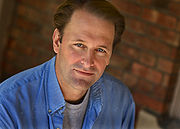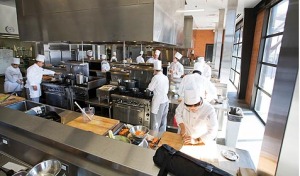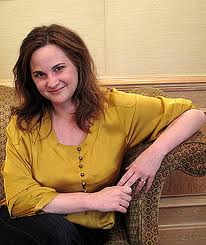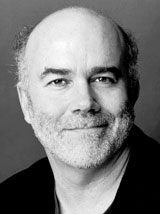Thanks to all of you who have continued to post on my blog during its long hiatus! I’m happy to say Prologue will be back up and running soon! Look for a new post in the next week or so!
Update on Sports Month
Ok. I’ll be the first to admit that I haven’t stayed on track for Sports Month. Go ahead, say it….SLACKER!!!!
1) Part of the reason is that we are reading The Hunger Games for our monthly book club meeting next week. Suffice it to say if you’ve ever read The Hunger Games, you know it’s like a potato chip….you can’t have (or in this case, read) just one. So I plowed through Catching Fire, which I actually liked more than The Hunger Games, and I’m halfway through Mockingjay, which I don’t like as much as the other two. Especially since a lot of good characters die in it.
2) As part of my commitment to not be a giant lump of lard on my upcoming 4oth birthday, I joined a gym about a month ago and I must say I love going. Between that and not eating fast food every day, I’ve already lost four pounds! Only two million to go!
3) So our Toshiba laptop is a certified hunk of CRAP. It keeps doing this weird white screen blinky thing when I try to boot it up and it is making me absolutely apeshit. So I am stuck hunting and pecking on my husband’s iPad. Seriously, don’t be jealous. I would do anything to have my Toshiba POS up and running. The keypad on the iPad sucks (first world problem, I know!)
4) Enough with the litany of excuses, already. Believe it or not, I have actually read some or part of the books I set for myself for Sports Month. I’ll give brief synopses here:
Friday Night Lights: I really, really enjoyed this book. I actually finished it about two weeks ago, but if you’ve read it, you know how complex this book is, and how only part of the story involves football. It is also about a very downtrodden town in West Texas that went through some major economic and sociological changes back in the 1980’s, to the point where high school football was the only certainty in their lives. And this town has one of the best high school football teams around. Devoid of everything in terms of excitement, the life of the town revolved around the high school football season, and every year the expectation of a state football championship was placed on the backs of this team of teenage boys, who were treated like gods by their classmates and the townspeople….as long as they’re winning. They leave high school only to find out that they’re regular people out in the real world. Some kids would never recover from those glory days.
The Majors: Borrrring….just like actual golf. And I love John Feinstein. Sadly I probably won’t finish this one.
Ball Four: An interesting day by day journal of a major league pitcher’s season. It gets a little long winded. I mean, something amazing can’t happen every day, right? Plus the book is huge….it’s about 600 something pages. I’ll probably continue to read it, but it’s huge to haul around and I have to read it in bits and pieces.
Among the Thugs…I am currently reading this now. It’s about crazy British soccer fans and what makes them start riots and beat people up and destroy property. Can’t just be because of soccer, right? It’s morbidly fascinating, and like Friday Night Lights, is more a sociological study than a sports book. I loved Bill Buford’s second book, Heat, and the writing style I so loved in Heat was definitely present in his first book as well. I will probably finish this in the next couple of days.
Wrapping up Food Month, Kicking off Sports Month
![]() I have to say I learned a lot from Food Month. Out of the five books I read, three were amazing, one was pretty good, and one was kind of not my thing. I finished Gabrielle Hamilton’s Blood, Bones and Butter, but am not sure I’m going to formally review it because I didn’t like it that much. Here’s a basic synopsis for those of you who might consider reading it: Teenage girl from a troubled home takes a job in a restaurant to put food on her table, and it turns into a career. After years of working in soulless catering jobs, girl opens her own restaurant in New York City to critical acclaim. Girl makes the mistake of marrying a ice-cold Italian doctor so he doesn’t get deported, and discovers it is only a marriage of convenience. Even though they don’t love each other and don’t really get along, this doesn’t prevent them from having a couple of kids. The best times are when they go to Italy every year for 3 weeks, where Girl falls in love with the country, the food, and her mother-in-law.
I have to say I learned a lot from Food Month. Out of the five books I read, three were amazing, one was pretty good, and one was kind of not my thing. I finished Gabrielle Hamilton’s Blood, Bones and Butter, but am not sure I’m going to formally review it because I didn’t like it that much. Here’s a basic synopsis for those of you who might consider reading it: Teenage girl from a troubled home takes a job in a restaurant to put food on her table, and it turns into a career. After years of working in soulless catering jobs, girl opens her own restaurant in New York City to critical acclaim. Girl makes the mistake of marrying a ice-cold Italian doctor so he doesn’t get deported, and discovers it is only a marriage of convenience. Even though they don’t love each other and don’t really get along, this doesn’t prevent them from having a couple of kids. The best times are when they go to Italy every year for 3 weeks, where Girl falls in love with the country, the food, and her mother-in-law.
Anyway! I would probably give the book a B- or C+ for a review, depending on my level of generosity at the moment.
So we’ve got some great reads coming up for Sports Month! I’m already halfway through Friday Night Lights, which is a very interesting portrait of a small town in Texas and their obsession with high school football. It makes me glad there is so much to do around my town that we don’t have to pin all of our hopes and dreams on and vicariously live through a team of teenage kids.
Other reads upcoming this month:
The Majors, John Feinstein
Ball Four, Jim Bouton
The Horse God Built, Lawrence Scanlan
Among the Thugs, Bill Buford
It’ll be great! Stick around!
Kitchen Confidential: Adventures in the Culinary Underbelly….Anthony Bourdain
Considering a career in the food industry? Or wondering what really goes on in restaurant kitchens? Read this book first.
Chef Anthony Bourdain’s Kitchen Confidential is a no-holds-barred, juicy tell-all book about what goes on back behind restaurant kitchen doors. In between revealing moments and helpful tidbits such as “never order fish or the house special on Monday nights”, Bourdain tells the story of his checkered career as a chef with humor and honesty. For those of us who think you’d go straight from culinary school into a cushy three-star restaurant job, think again. Although Bourdain graduated from the famed Culinary Institute of America (CIA), his path was anything but smooth. And for those who might think working in a high-profile kitchen would be glamorous and exciting, Bourdain shows us that kitchen life is really anything but that.
One of the shocking aspects of Bourdain’s book is his acknowledged addiction to drugs and alcohol during the early phases of his career. Bourdain openly admits to showing up to work high on heroin, methamphetamines, and cocaine. Food Month here at Prologue has been very eye opening, in that it doesn’t seem Bourdain’s lifestyle was unique. Chefs Gabrielle Hamilton and Mario Batali also tell tales of drug and alcohol use in the early stages of their careers. My surprise here is twofold: 1) How can these people show up and successfully get through a work shift when they’re high on all kinds of crap, and 2) what is it about cooking that would cause people to turn to that lifestyle? Admittedly, cooks don’t work 8 hour days like the rest of us. Bourdain tells about showing up for prep work at 7:30am, and sometimes heading home at midnight. Although not supportive of drug use, I can somewhat understand how an amphetamine or an “upper” would be helpful to get through long days.
Also surprising were Bourdain’s revelations about professional kitchen staff. Thinking most two- or three-star restaurants would employ only storied and experienced cooking school graduates, I discovered this was emphatically not the case. Bourdain reveals that most kitchens are staffed with underpaid cooks from foreign countries like Ecuador, Mexico, and the Dominican Republic, whom he maintains can cook any culinary school graduate under the table any day of the week. Bourdain also talks about the male dominated dynamic of most kitchens, where the cooks trade insults, dick jokes, and regularly harass each other. It doesn’t sound like a very inviting place for women to work! Bourdain definitely agreed with me, and remarks that women in the industry have to be tough as nails and be able to hold their own in the testosterone-charged atmosphere. I bet they don’t teach those skills in cooking school!
Other parts of the book I enjoyed equally. Bourdain’s trip to Tokyo and his week-long immersion in and enjoyment of their culture was fascinating. I wondered as I read about this trip if that was what inspired his show No Reservations, where he goes to visit other countries and tries their food. Bourdain is definitely not afraid of food! As a child, Bourdain admitted to being a picky eater until he sampled his first raw oyster in France and was served vichyssoise aboard the Queen Mary. From that point forward, any and all food was fair game. I think that’s an important quality in a chef, to know what most things taste like.
Bourdain’s book was hugely entertaining, and although I had read the book about 2/3 of the way through last summer and didn’t finish it, I’m glad I restarted it and finished it this time. Goes to show what giving books a second chance can do! I’ll tag this one for the Books I Started But Didn’t Finish Challenge.
Grade: A
The Making of a Chef: Mastering Heat at the Culinary Institute of America….Michael Ruhlman
The Culinary Institute of America (CIA) is one of the most famous cooking schools in the US. Founded in 1946, the school boasts famous chefs Cat Cora (from Food Network’s Iron Chef America), Anthony Bourdain (from Travel Channel’s No Reservations) and Andrew Zimmern (of Bizarre Foods fame) among its alumni.
In 1997, writer Michael Ruhlman enrolled at the Hyde Park, NY campus of CIA to take classes alongside real chef candidates. What he learned there during his two year stint and his impressions of the life of a culinary student make up his excellent book, The Making of a Chef. With no previous culinary training, Ruhlman began with the basics (where he learned basic knife skills and how to make stocks and sauces). Like his fellow students, Ruhlman would be expected to prepare and present different dishes and techniques to the chef at the end of each class, who would taste their offerings and grade them. I gained new respect for the chef instructors, who during the course of one morning might have to taste 32 brown sauces before 9:30am and be able to critique them all. I think I would have been burnt out on brown sauce after maybe three tastings!
Ruhlman includes many of the talks the chefs had with their students, as they offered them advice and helpful criticism, and also described many of the students taking the classes along with him. The dedication students put into their training was awe-inspiring, as Ruhlman talks about showing up for baking classes at 3:30am, and sometimes not leaving school until midnight. Ruhlman finds out the dedication required of future chefs when he attempts to call one of his instructors the day of a test when bad weather hits. Although Ruhlman is not a full student, the instructor delicately explains that chefs find a way to show up, no matter what. Ruhlman gets in the car and makes it to the test.
I was also surprised to read about how much book work was required during cooking school. One of the required texts was Harold McGee’s On Food and Cooking, which if you’ve never picked it up, is AMAZING. It’s not a cookbook. Basically, it describes all the different cooking techniques and what physically and chemically happens to food while you cook it. Why do carmelized onions get sweet? Why does bread have all those air pockets in it? What happens when you brown meat? It’s all in there. Students were referred by their instructors to McGee’s book many times during Ruhlman’s book; instructors wanted them to know not only how to cook but what was happening to the food and why they were doing it. There were also some required non-cooking classes prospective chefs need to take, such as sanitation, culinary math and gastronomy. I sure could have used culinary math during my stint at Le Cordon Bleu last weekend!
The final part of Ruhlman’s book described the final weeks in the life of CIA students, where they work at several of the school’s public restaurants. Students not only cook all the food served at these restaurants, but they also act as waiters, so that they get a good idea of life in the front and back of the restaurant. My husband Chris and I went to Le Cordon Bleu’s student-run restaurant, Technique, for dinner tonight to experience that first-hand. It was incredible. For 15$ a person, you get a four course dinner, which includes soup, salad, an entree and a dessert. Wine was also offered. The food is all cooked by culinary students who are about to graduate, so the food and presentations were outstanding. I had a mozzarella caprese salad, creamy potato bacon soup, filet mignon, with hand cut fries, and a strawberry/raspberry crumble. It was delicious!
As I mentioned in my last post about cooking class at Le Cordon Bleu, this book was beyond awesome. Clearly his experience at the CIA inspired Michael Ruhlman, as he has written two followup books, The Soul of a Chef and The Reach of a Chef, and has also collaborated on cookbooks with Iron Chef America’s Michael Symon and the Napa Valley’s The French Laundry chef Thomas Keller. Read this one if you get a chance.
Grade: A+++
Update from Food Month
 Ok, so you may have noticed a dearth of reviews in the past couple weeks. There is a very good reason for that. I have fallen into Food Month in a very, very big way.
Ok, so you may have noticed a dearth of reviews in the past couple weeks. There is a very good reason for that. I have fallen into Food Month in a very, very big way.
I so enjoyed Michael Ruhlman’s book The Making of a Chef (which I apologize for not having reviewed yet but when I do it will get about an A+++++), which describes Ruhlman’s time at the Culinary Institute of America in Hyde Park, NY. I was so completely taken in by Ruhman’s descriptions of the challenges of cooking school that I decided I wanted to find out for myself what it would be like. I did some research and discovered that the famous cooking school Le Cordon Bleu offers classes for nonprofessional chefs, which are taught in their kitchens by their very own chefs. I am so fortunate that the Minnesota campus of Le Cordon Bleu is a mere twenty miles away! So I took the big step and signed up for their Taste of Italy class, which I attended this past Saturday.
About sixteen of us were herded into a professional cooking kitchen, which was awesome. We watched demonstrations by the chefs of searing veal cutlets, making our own pasta, and then making capelletti pasta, which are like little tortellini. We were then put into groups of four and during the course of the four hour class were given the daunting task of making some famous Italian foods I had always heard of but never tried myself, such as polenta, risotto, pesto, a tomato sauce and bechamel sauce, and some fried foods. I was tasked with making the bechamel sauce (which is a bland, creamy white sauce) and a fried risotto and bolognese meatball with a mozzarella center. We all made our own pasta dough, rolled out our own pasta with the pasta maker, and then attempted to fill our pasta and fold it in the specific way needed for cappelletti. Getting the specific shape for the cappelletti was more challenging than I thought it would be! Chefs make everything look so easy!
Needless to say, I am no professional cook, and don’t even pretend to be one in my spare time. Luckily none of my tablemates were either, so we had a blast. Chef Jeremy helped me thin out my bechamel when it got too thick too fast, and the risotto meatballs were fabulous. Using the deep fryer brought me back to my high school days. 🙂 I was shocked at how easy it is to make your own pasta dough, and how quickly fresh pasta cooks (I think we boiled it for two or three minutes only!). I managed not to embarrass myself too much, and Chef Jeremy was awesome.
Surprisingly, there were other challenges I hadn’t counted on. I’m so used to my own kitchen and knowing where everything is that I was completely thrown for a loop in such a large space. The school had every single ingredient there for us, and a walk in cooler, gas ranges, and even a Kitchen Aid mixer for each group. Plus every type of kitchen gadget known to man. I felt like I did a lot of running around trying to find stuff at first. It was also challenging since the recipes we were given utilized metric measurements (grams and milliliters) instead of ounces and cups. Happily the chef did all the conversions for us, but it was a great reminder of Le Cordon Bleu’s French ancestry and the fact that everyone else in the world totally knows what a pint is. It was also difficult working in a group. The women I was with were very friendly, but I was so used to having my own stove and my own space that it was very challenging working around others when two of us were trying to do sauces on the stove at once. It gave me a good feeling for the craziness that so many of the food books I’m reading have described a professional kitchen to be like.
So the best part came at the end, when we all got to relax and eat everything we made (which was PHENOMENAL!) and they gave us aprons and certificates to take home. We also didn’t have to do our own dishes, and THANK GOD. I never realized what a sloppy cook I would be. It gave me new respect for the cooking profession and those who go through the schools to learn how to do it.
Happily the school has classes that run during the whole year, so I will gladly be heading on back there very soon! I promise reviews of The Making of a Chef and Gabrielle Hamilton’s wonderful Blood, Bones and Butter (I’m 3/4 of the way through it) will be up soon!
Julie and Julia: 365 Days, 524 Recipes, One Tiny Apartment Kitchen….Julie Powell
In September of 2002, Julie Powell was as lost as lost could be. On the cusp of turning thirty, childless, and spending her days in a thankless job at a bloated government agency in New York City, Powell was desperately searching for something to give her life meaning. She found it between the covers of Julia Child’s masterpiece, Mastering the Art of French Cooking, Volume 1. A self-taught cook with no professional training, Powell challenged herself to cook every one of the 524 recipes in the book within the space of a year, and created a blog where she shared her epic journey with others. The success of her blog led to national recognition in print and on TV, and eventually the really cute movie Julie and Julia, where Julie’s cooking challenges are contrasted against Julia Child’s discovery of food and cooking in France. Her book Julie and Julia is a memoir of the year she spent cooking and her unlikely rise to fame.
Surprisingly, I found this book very enjoyable, despite the fact that many of the reviews I read on Amazon were negative. Reviewers complained loud and long about Powell, labeling her as narcissistic, whiny, and angry. Let’s be honest…they’re all correct. She’s not particularly likeable personally, and it sounds like her husband spent several nights during that year hiding from her :). She’s like that crazy, neurotic friend we’ve all had at some point in our lives, (or have BEEN at some point in our lives)….very entertaining but slightly unstable. For me, this book was a guilty pleasure, just like reality television; it sucked me in not because Julie Powell was a great person or role model in any way, but because I couldn’t wait to see what happened next. I actually found her cooking freakouts slightly enjoyable and humorous, since I’ve had many myself. Haven’t we all had something go horribly wrong in the kitchen? I grudgingly had to admire Powell’s bravery for attempting some of those recipes and making them edible, and maybe more so her family and friends for eating them along with her. Aspics and bone marrow sauce sound disgusting!
This book was a nice change for me, since I read so much heavy nonfiction. It was a light, quick read and was hilarious in parts (the aspic section alone is worth the price of the book). It’s not really a book about serious cooking, so if you’re looking for that you’ll be disappointed. The book made me feel that any of us could take on a big challenge like Julie Powell did and learn something about ourselves in the process. I haven’t read great reviews of her next book, Cleaving, but I will probably pick it up at some point, just to see how the drama continues.
Grade: A-
Heat (An Amateur’s Adventures as Kitchen Slave, Line Cook, Pasta-Maker, and Apprentice to a Dante-Quoting Butcher in Tuscany)….Bill Buford

Mario Batali's New York City restaurant, Babbo, where Buford spent nearly two years working in the kitchen.
What a great, great way to kick off Food Month!
In 2002, writer Bill Buford decided he wanted to see if he had what it took to cook professionally. Rather than going to cooking school, Buford talked his friend Mario Batali (of the orange clogs) into letting him work in the kitchen of his 3-star New York City Italian restaurant, Babbo, and Batali agreed. Thus would begin a journey that would take Buford from the kitchens of New York to the countryside of Italy, in search of the elusive secrets of good cooking.
Buford writes of the stress of working in a high-pressure kitchen, first as a prep cook, then at the grill, and then a brief stint at the pasta station, each with its own challenges and lessons. What Buford thought he knew about cooking was thrown out the window as he learned on-the-job knife skills, how to plate professionally, and how a kitchen works. He expertly chronicles the rise to fame of Batali, from unknown California chef to Food Network superstar. On Batali’s advice, Buford spends months abroad in Italy, learning first-hand from cooks who have been making pasta and butchering cattle for generations, using recipes and techniques passed down to them from family members. Throughout his journey, Buford learns a new appreciation for food and cooking as he hones his craft from the experts.
I loved this book, start to finish. It was very illuminating to read about what really goes on back behind the kitchen doors at a restaurant. I had no idea it would be so complicated to run a kitchen, how many people are involved (and how crazy some of them are!) and the long hours they work to make success happen. What appears to happen so naturally to us as diners takes a lot of coordination, talent, and personal sacrifice 🙂 His descriptions of the food throughout the book were so detailed. I could see almost every dish and wanted to eat many of them myself, or at least try to cook them. Sometimes I was laughing out loud. Buford’s description of Batali creating an over-the-top multi-course tasting menu for visiting chefs (jokingly remarking that they are going to serve him so much food that “we’re going to kill him”) was hilarious, as was the story of Batali slaving away for renowned British chef Marco Pierre White in a small British pub, shoving a shellfish reduction through a tea strainer to reduce it. I also loved the parts when Buford was in Italy, seeing how pasta is made by hand, or how cows are butchered, and the people he meets there, not to mention how differently people eat in other countries than we do here in the US.
In the end, Heat wasn’t so much about food as it was about the people who cook it and why/how they do what they do. It was fascinating. Even though I’m a picky eater and probably wouldn’t have eaten stuff like sweetbreads and sausage made with the pig’s intestines for casing, everything sounded delicious. Buford’s love for all things food definitely showed through in this book, and I wish there was more.
Grade: A+
Wrapping Up True Crime Month….Kicking off Food Month
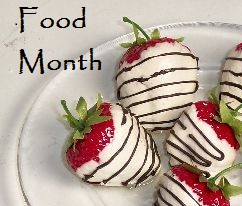 I have to say I thoroughly enjoyed True Crime Month. Out of five books I read, two were outstanding (Devil in the White City and Killer Colt), two were better than okay (Confessions of a Jewel Thief and The Poisoner’s Handbook), and one sucked (Sex on the Moon). That’s a pretty great month of reading, if you ask me! If anything, I realized that criminals do some pretty dumb things, and they almost always get caught.
I have to say I thoroughly enjoyed True Crime Month. Out of five books I read, two were outstanding (Devil in the White City and Killer Colt), two were better than okay (Confessions of a Jewel Thief and The Poisoner’s Handbook), and one sucked (Sex on the Moon). That’s a pretty great month of reading, if you ask me! If anything, I realized that criminals do some pretty dumb things, and they almost always get caught.
I’ve read some other great True Crime books on the blog before True Crime Month, and wanted to give those a shout-out in case any readers out there want to pick up some great reads. Check them out on the sidebar.
Okay! We’re moving right along to my other favorite subject (besides reading)…FOOD!!! I have some great food reads lined up for February.
Julie and Julia, Julie Powell
Kitchen Confidential, Anthony Bourdain
Bones, Blood and Butter, Gabrielle Hamilton
Heat, Bill Buford
The Making of a Chef, Michael Ruhlman
Killer Colt: Murder, Disgrace, and the Making of an American Legend….Harold Schechter
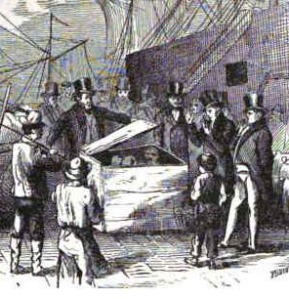
Woodcut illustration appearing in a newspaper of the time depicting the gruesome discovery of Samuel Adams' body in a crate by the docks.
September 17, 1841. An argument breaks out in a second floor office of the Granite Building in New York City. A hatchet is raised and connects with the head of a man named Samuel Adams, smashing into his skull and killing him. His body is stuffed into a wooden packing crate, dragged down a flight of stairs, and is carried by horsecart to a waiting steamer bound for New Orleans. The killer returns to the office and cleans up the mess, thinking he has removed all of the evidence and gotten away scot-free.
He is wrong.
Harold Schechter’s amazing book, Killer Colt, follows the quite different lives of two brothers, John Caldwell Colt and his brother, the famous Samuel Colt, inventor of the Colt repeating pistol. Both boys were born into a well-to-do family that falls on hard times. Their mother and sisters die young, and although his father remarries, the boys are left to find their ways in the world. John hires Samuel Adams to print his famous book on bookkeeping (which goes through 42 editions!), but the two come to blows that fateful night in September over an unpaid bill. Were it not for the astute observations of Colt’s neighbor, Asa Wheeler, who witnessed Colt’s actions through the keyhole of the door, the crime may have gone undiscovered. Colt’s subsequent arrest leads to the Trial of the Century, as the jury struggles to convict him of either manslaughter based on self-defense, or premeditated murder.
Schechter’s book starts slow with the introduction of the Colt boys and their sad childhoods, but builds momentum as the crime is perpetrated and the trial begins. He suggests that this was the first American trial to be influenced by the ‘penny press’, which were smaller newspapers geared more towards average Americans. These early versions of The Enquirer splashed inflammatory and/or graphic illustrations on the front page and carried lurid stories and scathing editorials about the trial. This was unheard of at the time and caused an uproar throughout the country (and this was before photography!). Men and women lined up by the hundreds to get seats in the courtroom to watch the trial unfold. They were exposed to graphic forms of evidence (the decomposed head of the victim was brought in as evidence one day) and dramatic episodes, as Sam Colt demonstrated his patented pistol right in front of the judge’s bench as evidence to help clear his brother. Besides inflaming public opinion, these papers had a direct impact on the trial itself. The widespread dissemination of information (and misinformation) about the trial made it difficult to seat an impartial jury. It was a trial unlike any other.
This book was so refreshing to read after all the bullshit fluff of Sex on the Moon. It was impeccably researched, well written and absorbing. Schechter did such a great job of getting into the minds and hearts of both of the Colt boys, and his coverage of the media circus that the trial became was entertaining and compelling. You can certainly see where the public’s love of dramatic murder trials first began!
If you love a good courtroom drama, this is one for the books. Check it out. Book number 3 for the NonFiction Non Memoir Reading Challenge!
Grade: A


